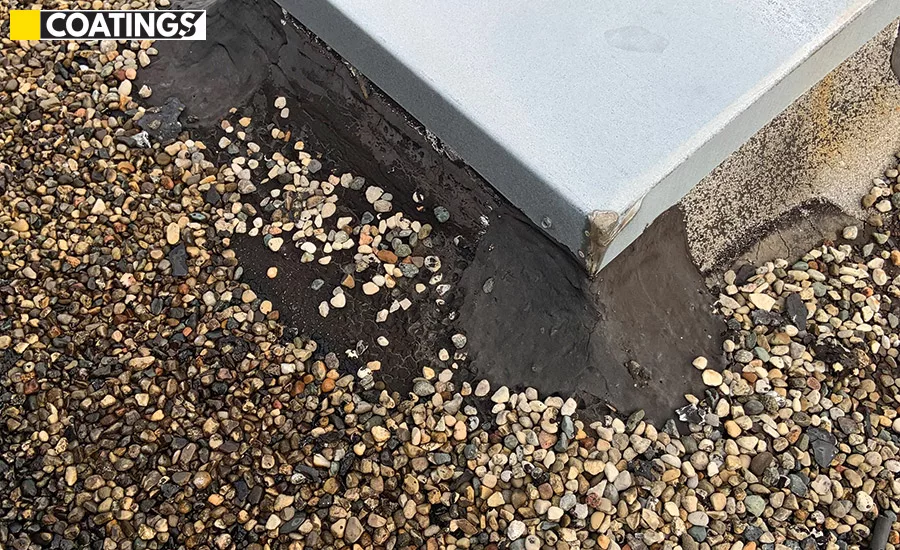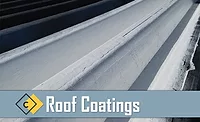Special Coatings Section
3 Simple Ways to Incorporate Coatings
Versatile products and anticipated demand can benefit roofing contractors ready to coat.

Proper application of roof coatings can effectively add service life to existing roof materials. If incorporated with service and maintenance programs, a roofing contractor can effectively expand their clientele, as not all building owners are in the financial position to replace roofs.
In recent years there have been technological advancements to coating formulations, which have increased the versatility of these products. Roof coatings are now manufactured in a variety of types, colors, and application methods that can be used to extend the service life of most roof materials and systems. Roofing contractors can benefit from the material advancements to better serve building owners through the increased inclusion of coatings in service and maintenance programs.
Roof Coating Benefits to Roofs
The main attribute of a roof maintenance program is to expand the service life of the existing roof system. The use of roof coatings in conjunction with proper roof repairs can extend the service life of a roof system. Roof coatings can provide benefits to all types of roof materials at every stage of a roof system’s life cycle.
Restore an aged roof: Coatings have been used to restore existing roof systems because they act as a surface that shields the membrane from erosion caused by rain, snow, sleet, and hail and to reflect ultra-violet radiation.
Protect a new roof: Roof coatings can provide resistance to degradation from chemical attack and ultra-violet radiation and eliminate the formation of small cracks associated with these degenerative conditions.
Energy savings: In proper situations, roof coatings can improve a building’s energy efficiency.
Roof Coating Benefits to Roofers
Most roof coatings can be applied with limited labor and require minimal equipment.
It is no secret that labor shortages are one of the biggest issues facing the roofing industry (and the whole construction industry). The current COVID-19 pandemic has further exasperated this problem. As we progress further into the 21st century, materials that can be applied with minimal labor will become standard out of necessity. Most coatings can be applied at increased application rates with a minimal amount of labor in a short period of time.
Most coatings require little, if any, equipment, eliminating the large investments in equipment and tools that are associated with other roofing materials. Coatings can be applied straight out of the container with brushes, rollers, squeegees, or spray machines. If using spray equipment, which can further expedite application rates, check with the coating manufacturer to determine the proper spray equipment and spray tips required for application of the coating. One benefit of spray application is that the required spray equipment is typically universal for most coating materials.
Here are three simple ways to incorporate roof coatings into service and maintenance programs.
1. Choose the Proper Roof Coating
There are a plethora of roof coating materials and manufacturers in the U.S. commercial roofing market. All of the coatings have specific benefits and disadvantages associated with application over specific roof materials and systems. No one coating may be suitable for all applications. It is a best practice to determine the roof coating required for each specific project based on the condition of the existing roof system, age of the existing roof materials, type of roof materials/system in place, and if there is a continual presence of ponding water over the roof system.
The anticipated life-extension time-period will also be a key factor in the determination process. Is this to be a short-term repair or is it expected to be a long-term restoration? It is in the contractor’s best interest to have the owner’s expectations in writing so that there are no misunderstandings of expected performance if and when problems arise.
2. Properly Train Personnel
The successful performance of all roof coatings is based on two factors: 1) proper preparation and 2) proper application. If there are shortcomings in either one of these areas, the roof coating will fail to provide performance for its anticipated service life.
Roof coating application can be completed with less labor; however, the applicators must be properly skilled to realize these benefits. Most roof coating performance failures are due to improper preparation and/or improper application completed by unskilled applicators.
Best practice is to professionally train a roof coating crew in the three elements of successful roof coating applications: repairs, preparation, and application. Most successful roof coating applicators form service and maintenance crews with a combination of highly skilled roof repair technicians and proficient coating applicators, as these are separate skillsets. Take advantage of the roof coating manufacturer’s training, evaluation, and on-site technical assistance services to ensure that proper preparation and application methods are followed.
3. Roof Coating Application Uses
Roof coatings can extend the roof system service life of all types of roof materials at the following locations:
- Membrane: Provide surface protection and add mil thickness.
- Best Practice: Apply roof coating over all flashing seams for long-term life extension.
- Flashings: Provide surface protection and add mil thickness.
- Best Practice: Apply roof coating over all flashing locations for long-term life extension.
- Accessories: Provide surface protection at base of components.
- Best Practice: Apply roof coating over base components for long-term life extension.
Proper application of roof coatings can effectively add service life to existing roof materials. If incorporated with service and maintenance programs, a roofing contractor can effectively expand their clientele, as not all building owners are in the financial position to replace roofs. Successful service and maintenance programs can add to the roofing contractor’s bottom line.
Looking for a reprint of this article?
From high-res PDFs to custom plaques, order your copy today!





